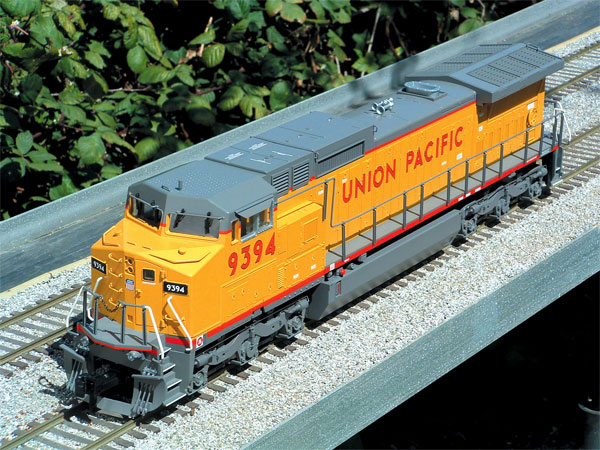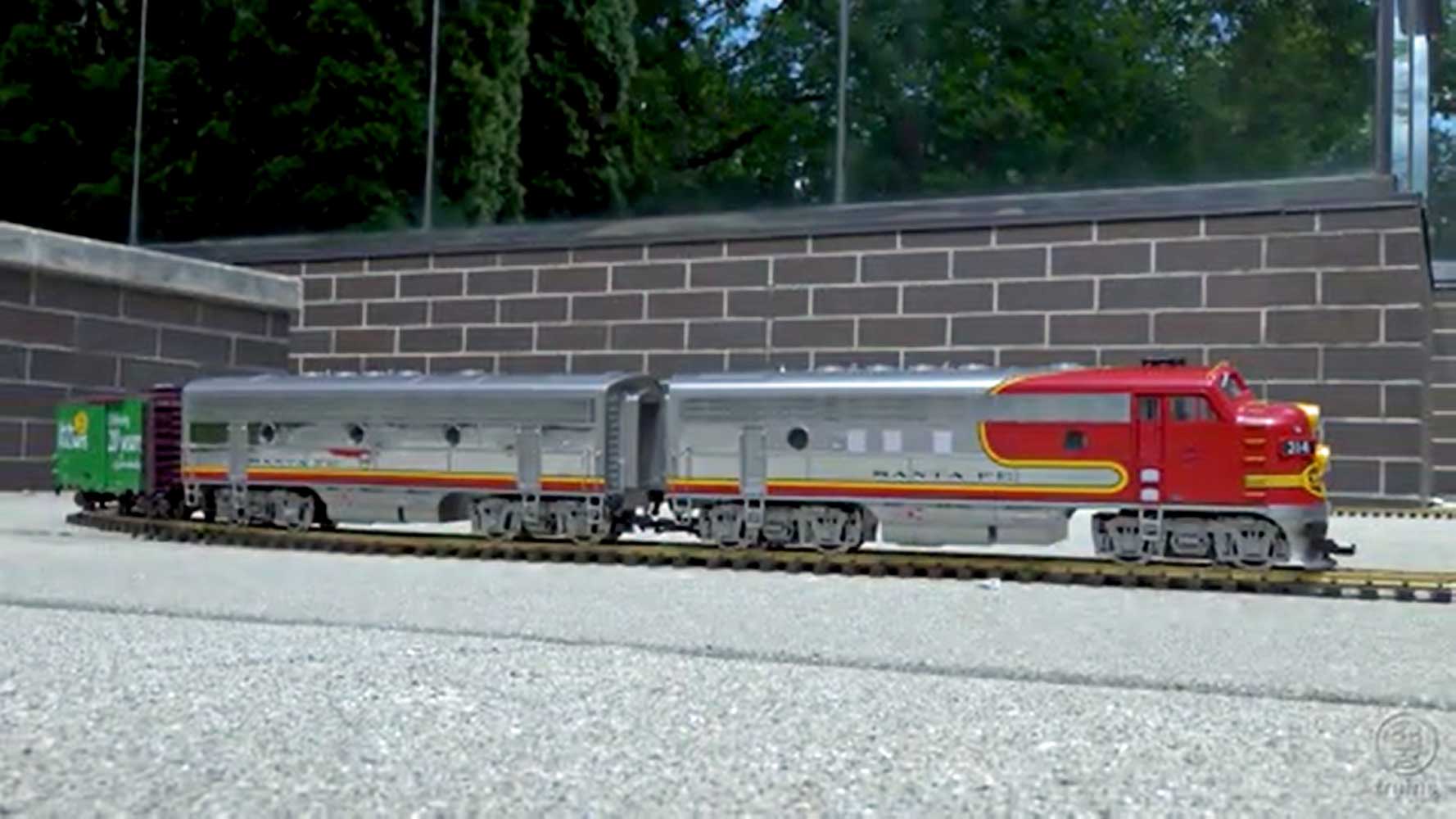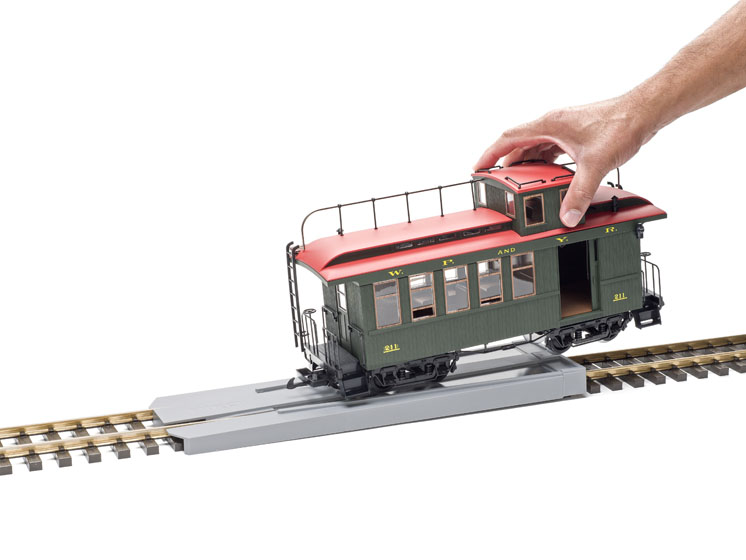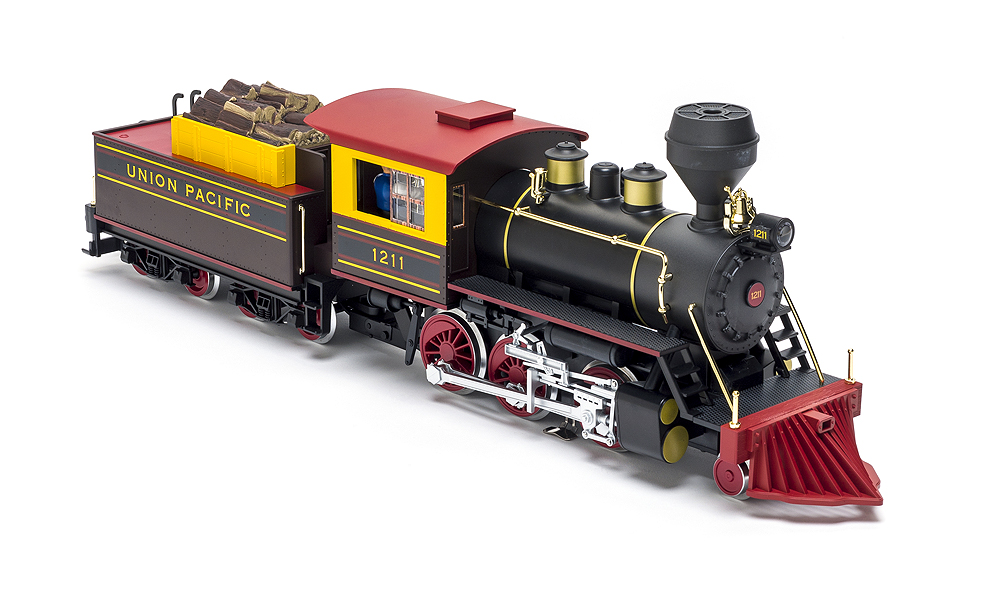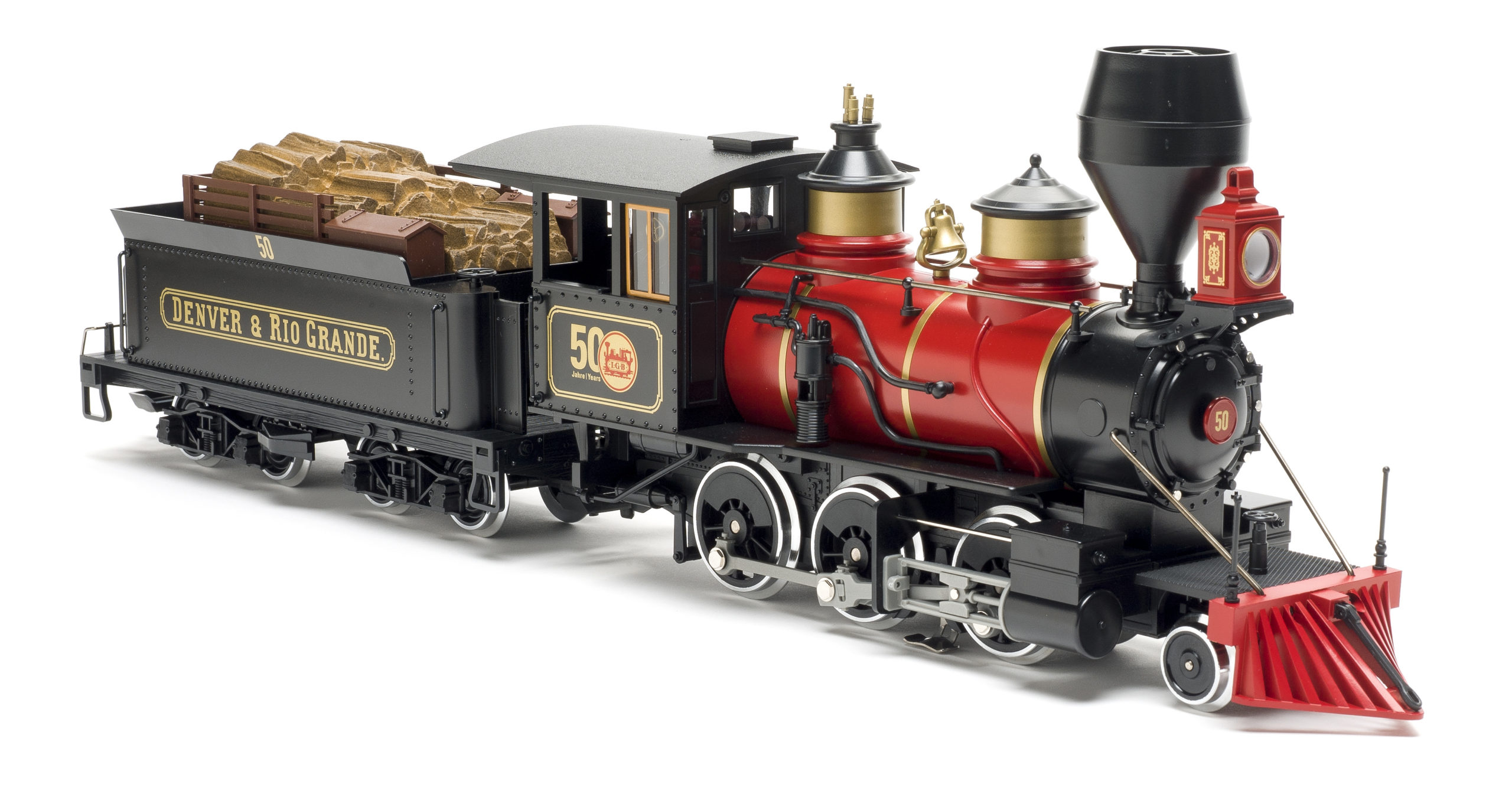1:32 scale, gauge 1, Dash-8 40CW diesel
MTH Trains
7020 Colombia Gateway Drive
Columbia MD 21046
Web site: www.mthtrains.com
Plastic model of a Dash-8 40CW diesel locomotive; modular electrical connections and car body; two, three-axle power trucks; one motor per truck; directional front and rear head and ditch lights; lighted number boards; interior cab lighting and details; operating smoke unit; sound system; metal railings and lift rings; operating knuckle couplers; opening side windows; accurate prototypical graphics and road numbers. Dimensions: Overall length (with JME or Kadee couplers) 26 1/2″, width 4″, height 6″. In 1:32 scale this works out to a correct 70’8″ x 10’8″ x 16’0″, respectively
Pros: Correct scale/gauge combination; most accurate injection molded, standard-gauge diesel ever produced for gauge 1; rugged construction; good puller; JME and Kadee coupler compatible; sound system and smoke unit included
Cons: Handrails uneven; handrails and grabrails slightly oversize; windows and windshield wipers oversize; wheels not easily replaceable
MTH’s first diesel offering is the Dash-8 40CW. The “C” stands for a three-axle truck. MTH also offers this model in the “B” two-axle version. At 26 1/2″, this is a big engine. This engine has the distinctive canted air intakes and squared off, overhanging radiator common to all Dash-8 locomotives.
This model is the most accurate, standard gauge, injection-molded-plastic diesel model ever produced for gauge-1 track. Although not perfect, it represents a significant improvement over other plastic diesels up to now. Due to the six-wheel trucks, adequate weight, and the two axles that have rubber tires on their wheels, it is an excellent puller.
At the time of testing, the Dash-8 had about five hours running time. Sound came on at 7.5V and .15 amps. Lights came on at 7.9V and .32 amps. Minimum scale speed without stall or hesitation was about 2.8 mph forward and 1.4 mph reverse, at about 10V and .5 amps. With 20 cars, the minimum forward speed dropped to about 1.5 scale mph. Scale speed at 19.2V was 82.5 mph. On level track, the drawbar capacity was 72 ounces, or about 58 average freight cars at approximately 3 amps. This is impressive for a single engine.
There is a significant voltage drop due to the internal electronics (sound, lights, smoke). This is not a problem, but it means that other manufacturer’s engines, wired with direct track power to the motors, will travel at different speeds given the same voltage. For those who will radio control this engine, this is not a factor; it is recommended, though not necessary, to use two receiver outputs to provide independent control of the sound relative to the motor speed, for enhanced realism. The model has directional lighting, including headlights, cab light, and ditch lights. The cab light is a bit bright at night.
The Dash-8 comes with MTH knuckle couplers and LGB-type hook-and-loop couplers. It also has mounting holes for JME or Kadee (#920 or #820) 1:32-scale couplers, which mount to the trucks. The model will negotiate 4′-radius curves with the Kadees. There is a large cutout in the snow plow (on the front) and the rear sill for coupler swing. If your railroad has larger-radius curves (probably 8-10′), you could body mount the couplers and close in the sills for a more accurate look.
The instructions accurately describe how to pull the model apart for servicing or kitbashing. The only difficulty was with the handrails, which were very tight. There is extensive use of mini plugs inside the body, which allows easy disconnection of the motor blocks, smoke unit, sound system, and cab lights for servicing.
The smoke unit has a fan with adjustable-speed output. It works well as far as simulating the exhaust plume of diesel smoke, which is different from a steam locomotive.
The sound system is designed to provide full functions on AC voltage, (the horn is only accessible with MTH’s DCS system or another AC trigger, such as Lionel’s GP-7 horn button). However, it does provide idle when the engine is sitting still but with power applied, and a rev-up once the engine is moving. In addition, during idle, cab chatter can be heard intermittently. This is a fun feature that many at our last train meet were surprised by, as the engine was parked on a siding. The sound level of the voices was a bit loud and distorted relative to the prime mover, but I assume that’s because the voices are supposed to be coming over the cab radio rather than the 1:32-scale engineer and conductor (also supplied). At any rate, it’s not a major problem, as they stop chattering once the engine is moving. A separate-level control would be nice. That might not be necessary if the diesel recording had good low-frequency response. This is a problem with models this size, but the sound can be significantly better than in the MTH diesel. One of the fun aspects of diesel models is hearing the rumble of these engines. There are two easily accessible trim pots for sound volume and smoke level, nicely hidden behind the cab’s front door. I also like the use of a magnet for the door catch.
The overall appearance of the model is impressive. MTH has done their homework with respect to the paint and graphics. I was curious about the hue of the yellow used, as it is darker than that used by Kato and Athearn (in HO scale). I took the model on a field trip to downtown Los Angeles and compared it side by side to a Dash-8 and five other Union Pacific engines. To my surprise, the MTH yellow was dead on, and more accurate than that used by the smaller scales. The numbers MTH chose are also correct for these UP engines.
The model has all of the details that make the Dash-8 and its later version, the Dash-9, impressive: see-through fan grills, see-through steps, and more. However, there are a couple of things that were noticeably wrong and should be fixed. The handrails and stanchions were not as square to the body as they should be. This is noticeable and not really correctable by the customer, as they seem to be soldered. They also are difficult to remove from the body for servicing or kitbashing. That can be helped by drilling out the mounting holes. The sliding window is way too thick, and the wipers are oversize. The handrails and model itself are very rugged. The engine survived an accidental three-foot fall with no damage to paint or parts.
Out of the box, the model has a pivoting pilot and will operate on 2′-radius curves. I attached the alternate pilot provided, which is fixed to the chassis. This looks much better and limits the model to a minimum 4′ radius. An engine this large really only looks right on larger-radius curves.
The Dash-8 is provided with coarse-scale wheels for code-332 rail (the same as 1:29-scale models). However it will also run on all code 197, 215, and 250 track (except for Märklin). My sample did slightly bind in my Llagas Creek turnouts because the center axle of each truck is under gauge (approx. 1.535″ back-to-back instead of the standard of 1.575″). MTH has indicated that this is their solution for allowing the engine to operate on 2′-radius curves. After discussing this with MTH, I was told that all future diesels will have the center axle at the correct, wider back-to-back spacing. I was impressed by MTH’s willingness to respond to customer input. Although the MTH wheel flanges are the same as 1:29-scale diesels, and it runs equally reliably, I feel MTH should offer replacement wheelsets with semi-scale flanges. Also, although not typical of models in this price range, it would be nice if the trucks had working suspension bolsters and pivoting axle ends.
MTH did a good job capturing the look of this engine; it is an appealing model. Overall, this is an excellent product that offers good value and an improvement in the accuracy of large-scale diesel models for gauge 1.





